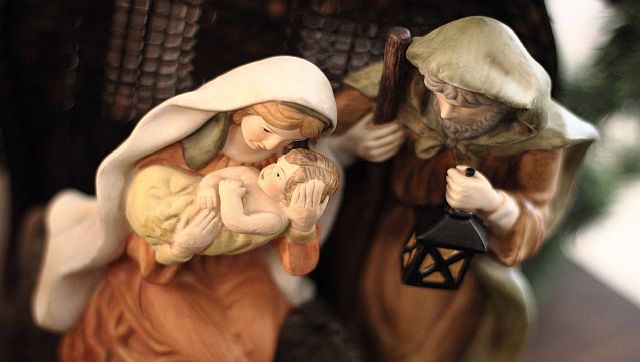by Devdutt Pattanaik
Editor’s Note: Around the time of Diwali, many Indians especially in the East also celebrate Kali Puja. The naked Goddess standing on top of a supine Shiva is a strong and fearsome image, that shocks many non-Hindus. But in his book 7 Secrets of Shiva (Westland), mythologist Devdutt Pattanaik explains how it’s really a dance about the search for harmony in the universe. Here is an excerpt.
Shiva is Rudra, the angry god. He is angry with Brahma because Brahma seeks freedom from fear by trying to control Prakriti rather than by seeking Purusha. In anger, he beheads Brahma, then shuts his eyes and immerses himself in the infinite bliss of an unfettered consciousness, sat-chitta-ananda. Liberated from all things sensory, nature has no effect on him.
Physics informs us that a surface looks white when all the colours in the light spectrum are reflected back. Shiva reflects back all things material. He holds on to nothing. To him, everything is as ephemeral as camphor. That is why he is called Karpura Gauranga, he who is as white as camphor.
But what is the point of wisdom if divorced from the world? Wisdom is meaningless if it does not enable the liberation of those who are trapped in fear. That is why the Goddess stands in opposition of Shiva as both the radiant Gauri, producing light, and as the dark Kali, consuming light. While Shiva sits still in the north, she comes forth swaying from the south as Dakshina-Kali, demanding to be seen. Nature will not be ignored.
The Goddess is naked with hair untied and drinks blood. Her nakedness is an invitation to sex, hence to childbirth and life. Her lust for blood is her acceptance of death. She is both life and death. Her unbound hair is a reminder that she is wild and raw. She is Shakti, energy, constantly on the move. He, on the other hand, is still like the hooded cobra. He shuts his eyes to her.
In Indian philosophy, a thing exists when it is seen. And a creature is alive when it sees. Shiva’s eyes are shut, meaning he is indifferent to the fears of those around him. Shakti, the mother, will not allow that. If she is Bhairavi, inducing fear, she needs Bhairava to enable the frightened to outgrow fear. Without Shiva, Brahma will remain finite and never realise his divine potential.
Brahma’s eyes are open, but he sees only his own fears, not those of others around him. Consumed by his own Brahmanda, he does not realise each one of those around him has a Brahmanda of his or her own. He needs to look at others, recognise that every man and every woman has his or her own subjective reality, his or her own unique way of looking at the world. He needs to have empathy.
Looking at others is called darshan. Brahma looks at others in fear: he pursues them as he pursues Shatarupa. He seeks them when they comfort him; he shuns them if they frighten him. When he looks at them, he wonders if they are ‘mine’ or ‘not mine’. A gaze that is born of fear, a gaze that excludes and exploits is not darshan. Darshan is gaze that is free of fear. Darshan is gaze that looks at the other for its own sake not because it is ‘mine’ or ‘not mine’. Darshan is an empathy-filled gaze. We see people around us as deer who fear predators, or as lions who fear scarcity and seek prey, or as dogs who bark when threatened or whine when ignored. Darshan enables us to see people’s thinking patterns or mind-sets. We recognise the Brahma and identify the Brahmanda around them. We see the pashu - dependent on Prakriti, frightened of Yama, lacking faith in atma and seeking refuge in aham.
When we genuinely do darshan, we discover how the other react to us. That is, the other ends up as a mirror or darpan, reflecting who we are. If people around us behave like deer, it means we are behaving like lions. If people around us behave like lions, it means they see us as deer. If people around us behave like dogs, friendly or hostile, it means we matter to them.
The Goddess wants humans to look at humans as humans. This will not happen as long as fear governs the relationship. Simply cutting Brahma’s head will not remedy the situation. Some hand-holding is required. Just as Brahma needs to have faith in Shiva, Shiva needs to have patience with Brahma. For this, Shiva has to first engage with the world, not withdraw from it. Determined to get Pashu-pati to help humans, Shakti dances on top of him. She hopes to transform Shiva, the insensitive angry god, into Shankara, the god who empathises and is patient.
In the lore of Shiva, Brahma is treated as Shakti’s father and Shiva is her beloved. Brahma behaves as a father should not behave, when he seeks to control his daughter. For this act, Shiva beheads him. Shiva behaves as a beloved should not behave, when he shuts his eyes to Shakti. The Goddess negotiates with both father and beloved. The father needs to trust and the beloved needs to pay attention. A relationship is needed for harmony to exist.


)




)
)
)
)
)
)
)
)